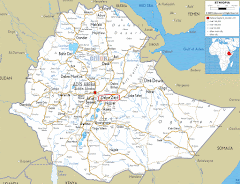Twice a month on Saturdays, I volunteer my time at "Yowaso," a group home for adults with mental disabilities. I work in the women's section where around 25 women live. My Japanese skills are limited, but I've learned to communicate on a basic level, and we have a good time.
I help those who need assistance with eating lunch, brushing teeth, or bathing. I walk hand in hand with Yuko, chat with Rie while she knits, answer Kazuko's many questions, and sing with Erika. There's a small group of women who love music, so I strum at the guitar and we sing familiar tunes together, like Do Re Mi, Happy Birthday to You, Edelweiss, and the Alphabet song, words insignificant. I'm learning some simple Japanese tunes.
My time at Yowaso is a high point each month. As a language teacher, I help students become better able to express their ideas in speaking and writing. At Yowaso, I realize there's a lot more to communication than verbal skills.
At Yowaso, everyone who desired took their turn at pounding. My partner for the day was Kyoko, dressed in dark pink. Another friend, Yoshimi-san, dressed in light pink, put way more energy into pounding than I did, as you can see from the photos!
Once the paste was pounded to perfection, it was time to eat! We had mochi with ground pork, pickled ginger, sweet red beans, and soy powder with sugar.
It was delicious but not easy to chew. Instead of tiny shaped rice cakes, which are a typical Japanese sweet, we ate globs of the sticky stuff. I read online that there are mochi-related choking deaths every year in Japan. I can see why. But still, it was delicious! More importantly, it was fun! The women, the men (from the men's section), and their families who came, seemed to have a grand time. I know I did.
I help those who need assistance with eating lunch, brushing teeth, or bathing. I walk hand in hand with Yuko, chat with Rie while she knits, answer Kazuko's many questions, and sing with Erika. There's a small group of women who love music, so I strum at the guitar and we sing familiar tunes together, like Do Re Mi, Happy Birthday to You, Edelweiss, and the Alphabet song, words insignificant. I'm learning some simple Japanese tunes.
My time at Yowaso is a high point each month. As a language teacher, I help students become better able to express their ideas in speaking and writing. At Yowaso, I realize there's a lot more to communication than verbal skills.
Last weekend, Yowaso had a special "rice-pounding" festival (mochisiku in Japanese). Festivals are big in Japan, and this was my second at Yowaso. In this New Year's tradition, a glutinous rice that's been soaked and steamed is then pounded and mashed with wooden mallets in large stone mortars.There's a chant that goes along with the heave-ho action--Yoisho (pound) and Kurasho (turn). The paste is turned by hand, adding water when needed. (If interested, there's a great 50-second you tube video on mochi making.)
At Yowaso, everyone who desired took their turn at pounding. My partner for the day was Kyoko, dressed in dark pink. Another friend, Yoshimi-san, dressed in light pink, put way more energy into pounding than I did, as you can see from the photos!
Once the paste was pounded to perfection, it was time to eat! We had mochi with ground pork, pickled ginger, sweet red beans, and soy powder with sugar.
It was delicious but not easy to chew. Instead of tiny shaped rice cakes, which are a typical Japanese sweet, we ate globs of the sticky stuff. I read online that there are mochi-related choking deaths every year in Japan. I can see why. But still, it was delicious! More importantly, it was fun! The women, the men (from the men's section), and their families who came, seemed to have a grand time. I know I did.































































